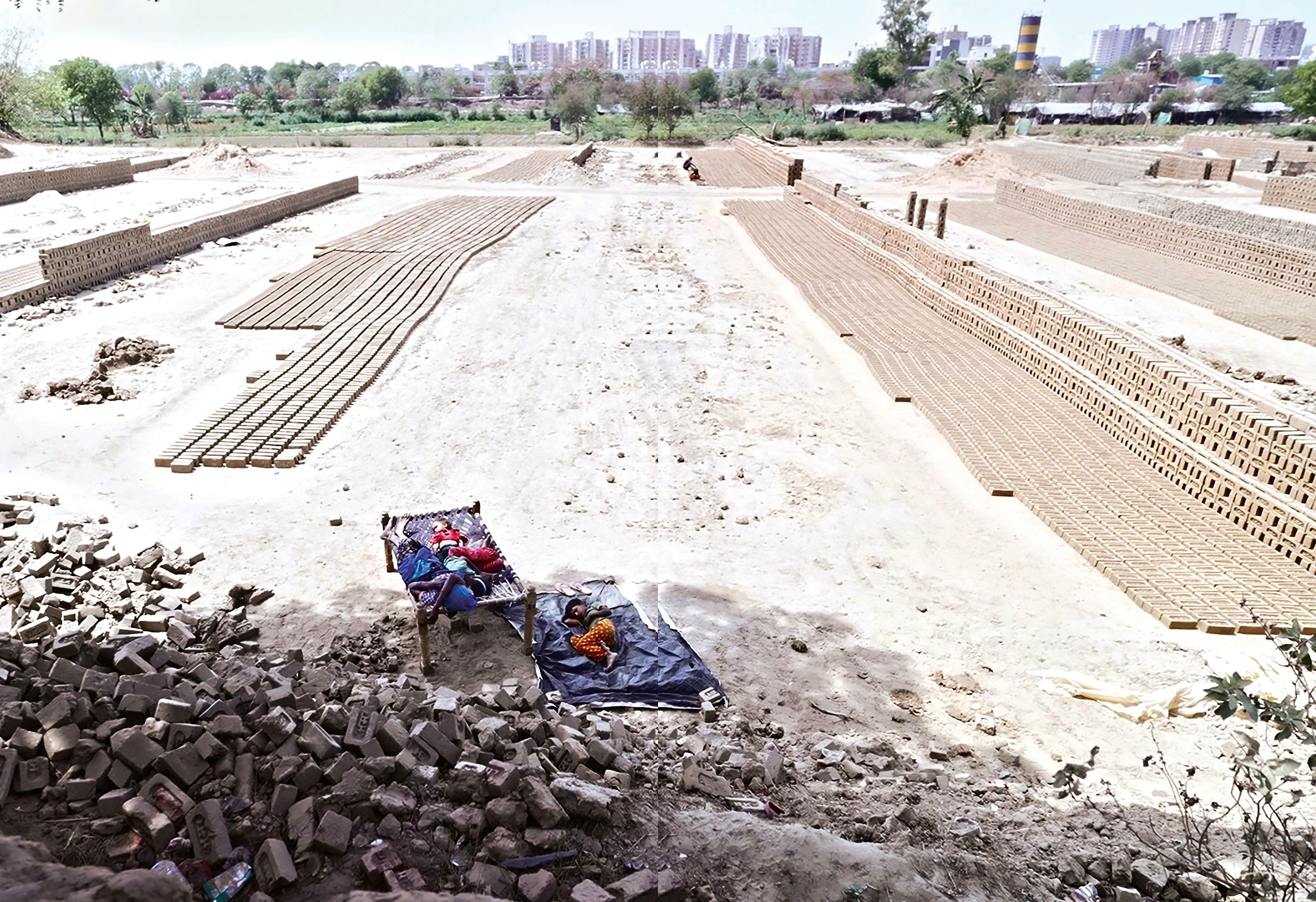कोशिश गोल्ड - मुक्त
BLAZING SUN IS ON
Down To Earth
|May 01, 2024
Rising temperatures are testing the limits of human tolerance to heat. With their predominantly built-up landscape, urban areas offer no respite. A study by the Centre for Science and Environment on the morphology and heat patterns of nine Indian cities over the past decade shows how these urban centres are turning into heat islands with a potentially serious impact on human health. An analysis by Rajneesh Sareen, Mitashi Singh and Nimish Gupta, with Shagun in Haryana and Kiran Pandey

BIRESH KUMAR, a 38-year-old labourer, works at least six hours in the sun every day. Though it is only mid-April-early days of summer in north India-the afternoon temperatures hover around 38°C in Bhopani, the village in Haryana's Faridabad district where Kumar works at a brick kiln. When the summer peaks in May-June, the mercury will likely cross 40°C. "I feel like I'm trapped in a heat island. But I have to work to repay a debt I owe to the labour contractor," says Kumar.
Sitting on a cot under a tree at some distance is Kumar's co-worker Somveer. For the past two days, Somveer has had body ache, weakness and fever, which have forced him to miss work and, as a result, forego his wage. He does not know the reason for his condition, but says it could be due to constantly working under the sun. The National Institute for Occupational Safety and Health, US, recommends that those who work in the heat should consume 237 ml of water every 15-20 minutes. But for workers like Kumar and Somveer, that would mean more breaks and missed targets, resulting in a loss of wage. Neeraj Kaushik, medical officer in-charge at the government hospital in Kheri Kalan that Somveer and Biresh have access to, says he sees several labourers with complaints of fainting episodes. "They are weak and dehydrated, with severely chapped lips. If they have comorbidities, like diabetes, it becomes an emergency situation. If their vitals are weak, it takes a long time to resuscitate them," he says.

यह कहानी Down To Earth के May 01, 2024 संस्करण से ली गई है।
हजारों चुनिंदा प्रीमियम कहानियों और 10,000 से अधिक पत्रिकाओं और समाचार पत्रों तक पहुंचने के लिए मैगज़्टर गोल्ड की सदस्यता लें।
क्या आप पहले से ही ग्राहक हैं? साइन इन करें
Down To Earth से और कहानियाँ

Down To Earth
SOME OVERLOOKED ASPECTS
Increasing night-time temperatures and rapid intensification of cyclones already happening
1 min
November 16, 2025

Down To Earth
Excessive groundwater extraction can cause subsidence
Subsidence is a global phenomenon seen not just in coastal regions, but also in inland areas. Natural subsidence progresses slowly, but anthropogenic activities, like excessive groundwater extraction, can significantly accelerate the rate, says LEONARD OHENHEN, assistant professor, department of earth system science, University of California, Irvine, US. In an interview with SUSHMITA SENGUPTA, Ohenhen says that climate change intensifies the problem through multiple pathways.
3 mins
November 16, 2025

Down To Earth
2025 IS UNPRECEDENTED
Never heard about so many such exceptional rainfall events as have occurred this year
1 min
November 16, 2025

Down To Earth
GOVERNING THE CLOUDS
In the absence of evidence, replicability, funding and transparency, cloud seeding languishes as an imperfect science
6 mins
November 16, 2025

Down To Earth
Heavier footprints
Investments and capital owned by the world's wealthiest few are driving the climate crisis, according to a first-of-its-kind report
3 mins
November 16, 2025

Down To Earth
Views on the annual Delhi pollution debate
This is in response to the \"Photo of the day: A game of soccer in post-Diwali Delhi\" published on the website on October 21, 2025.
2 mins
November 16, 2025
Down To Earth
Climate change fuelled hurricane Melissa
ON OCTOBER 28, category 5 hurricane Melissa made landfall in Jamaica with maximum sustained wind speeds of 298 km per hour (kmph), making it one of the strongest hurricanes in the North Atlantic Ocean.
1 min
November 16, 2025

Down To Earth
ICAR's claims exposed by its own data
Why has ICAR flouted crop testing rules and ignored data red flags to push gene-edited rice strains that will not benefit farmers?
4 mins
November 16, 2025
Down To Earth
COMMUNITY RIGHTS BEFORE RELOCATION
Union tribal ministry releases policy document on rights of communities in tiger reserves marked for relocation
2 mins
November 16, 2025

Down To Earth
Stork sanctuary
Villages in Uttar Pradesh mount efforts to protect painted storks and inspire a conservation movement
2 mins
November 16, 2025
Listen
Translate
Change font size

